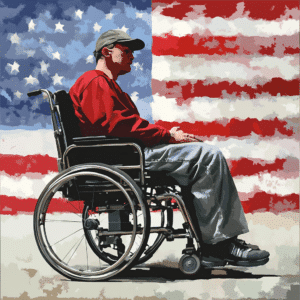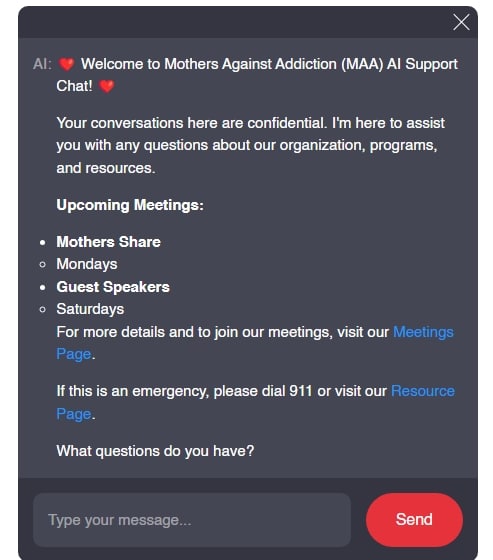At Mothers Against, we understand the heartache that families endure when a child struggles with addiction. The road to recovery might seem long and winding, but the 12 step program offers a beacon of hope. This structured framework has been a pathway to healing for countless individuals, providing a sense of direction and community along the way. By exploring the 12 steps of AA and the powerful transformations they can encourage, we hope to support not just those battling addiction but also their families who feel the weight of this challenge.
Understanding the 12 Step Framework in Addiction Recovery
The 12 step program is crucial for many in their fight against addiction. Originally created for Alcoholics Anonymous (AA), it has since grown to encompass various groups helping people tackle their dependencies. At its core, the program emphasizes personal accountability and spiritual growth, helping individuals comprehend the underpinnings of their addictions.
Each step is a building block towards recovery and ultimately, transformation. It provides a structured path for self-reflection and change, reminding parents and loved ones that recovery is a process requiring patience and understanding. By delving into the 12 steps, we can spotlight their relevance not just for the individual suffering from addiction but also for the family unit.

The 12 Steps of AA: A Roadmap to Recovery
The 12 steps of AA form a comprehensive roadmap to recovery. Let’s break down these steps for a clearer understanding:
These steps offer a holistic approach, not only mending individual lives but also fostering healthier relationships and spiritual awakenings.
How the 12 Steps Adapt to Contemporary Issues in Addiction
The Influence of AA Steps Beyond Alcoholism
While the 12 steps originated in alcohol recovery, their essence extends into other forms of addiction, like substance abuse and gambling. Groups such as Narcotics Anonymous (NA) and Gamblers Anonymous (GA) have adopted the AA framework to fit their unique challenges. These adaptations meet various needs, acknowledging that addiction doesn’t fit into a neat box.
The opioid crisis further showcases the need for these adaptations. With the prevalence of prescription pills like the “I 10 pill” — a common reference to pain medications — the 12 steps have evolved to address pressing contemporary issues. Families need resources and support to navigate their loved ones’ battles with addiction.
Success Stories: Transformation Through the 12 Steps
Stories of transformation abound through the lens of the 12 steps. For instance, actor Robert Downey Jr. illustrates how embracing the AA principles reshaped his life from addiction to success. His ability to overcome obstacles resonates deeply with families, presenting hope amidst despair.
Demi Lovato’s candid journey in battling her addiction also embodies the spirit of recovery. By using the steps, she has spoken openly about her struggles while advocating for mental health awareness. These narratives inspire others to embrace the 12 steps as catalysts for not just recovery but also profound life changes.

The Role of Community in the 12 Step Process
Community plays a pivotal role in the 12 step journey. The fellowship created in support groups encourages honesty and accountability. Participating in these groups allows individuals to share stories, strategies, and lessons learned, forging connections that combat isolation.
The bonds formed in these environments are invaluable. Vulnerability can be a source of strength, creating a safe space to open up about struggles and share progress. These communal experiences help families understand addiction better and foster empathy, ultimately guiding them toward healing.
Services that Enhance the 12 Step Experience
Today, there are many organizations that enhance the 12 step experience. Beyond AA, alternative recovery programs tailor different approaches depending on individual needs. For example, SMART Recovery uses cognitive-behavioral techniques to empower people in reclaiming their lives.
This variety is essential; it acknowledges that everyone’s recovery journey differs. Whether it’s through AA’s 12 steps or alternative methods, finding the right path can make a tremendous difference in recovery.
Embracing a Holistic Approach to Transformation
Transformation through the 12 steps isn’t merely about achieving sobriety; it encompasses personal growth, emotional health, and improved relationships. Many participants benefit from concurrent therapies, like individual or group counseling, to enhance their recovery experience.
Incorporating mindfulness, nutritious eating, and lifestyle adjustments plays a vital part in this transformation. Recognizing broader lifestyle choices that contribute to addiction is essential for sustained recovery. Communities can strengthen support systems to help families navigate these lifestyle changes together.
A Forward-Looking Perspective on Recovery
As we head into 2024, it’s crucial to view the 12 step journey as a lifelong commitment to growth and connection. Recovery isn’t a finite goal; it’s an ongoing process that requires openness to change. Families must examine the resources available, like those from Mothers Against, which provide guidance and understanding of addiction’s intricacies.
The 12 step journey offers solace and strength to families. Its messages remain as relevant today as they ever were. Embracing this journey means nurturing relationships and fostering an environment that promotes lasting recovery.
The 12 step journey embraces resilience, promising hope and healing for those affected by addiction. With the right support and community, recovery becomes not just possible, but a powerful transformation toward a healthier life.
The 12 Step Journey: Understanding the Process
The 12 step program is a structured approach that folks use to tackle addiction, aiming for transformation and recovery. You might’ve heard that these steps can be traced back to the 1930s, founded by Alcoholics Anonymous. Interestingly, the approach is quite flexible and can be adapted to various dependencies, reaching out to people from all walks of life. Just like how the plot twists in Virgin River Season 5 Episode 11 can shift characters’ lives, each step can redirect one’s personal journey toward health and healing.
Trivia Time: Little-Known Facts
Did you know that many recovering individuals firmly believe that sharing stories is a crucial part of the 12 step process? It’s all about creating a community, which is why you might find a similarity to the way suit acting brings actors together, helping them find common ground through shared experiences. Speaking of connections, the 12 step program has expanded beyond alcohol and drugs, addressed issues like gambling and even eating disorders. It’s all about fostering understanding and support among participants, very much like how the black population in The Us rallies to raise awareness about social issues impacting their communities.
The Influence of Environment
Participants in recovery often credit their environment and community for success. Imagine a bear at the Woodland Park Zoo snatching ducklings — it sounds alarming but shows how surroundings can impact behavior. Similarly, the people around someone trying to embrace the 12 step method matter greatly. It’s essential for friends and family to create a positive atmosphere that encourages change. Just like knowing how long postpartum depression can last helps individuals seek necessary support, understanding the importance of community can foster healthy behaviors.
Through this journey, participants also explore personal growth, and just as learning the analgesic meaning can shed light on physical relief, these steps offer emotional and spiritual comfort. Don’t forget the significance of taking breaks from social media; if you ever wondered How To deactivate Facebook, unplugging can greatly aid in the recovery process, giving folks space to focus on themselves. All in all, the 12 step journey isn’t just a series of tasks, but a holistic approach toward healing, fueled by connections and a supportive network of individuals.





























